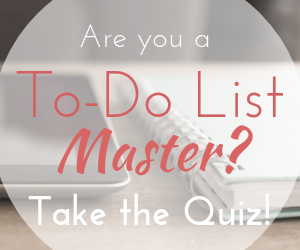It started in 2012 when I was invited to stay at my good friend Jordan’s home in West Hollywood, CA. A photographer and fellow entrepreneur, we had enjoyed many long, business brainstorming conversations, and I had an extra night tacked onto my west coast trip. That evening, when I arrived at the stucco apartment building with the roses in the front yard, I didn’t realize that I was about to experience a revelation.
After a warm welcome from Jordan, his (then) fiancee Brianna, and sweet dog Chauncey, I was shown to my guest room which was usually Jordan’s office. I walked into the room and my eyes fell on… his whiteboard wall! It was an ENTIRE WALL of dry erase scribbles. I’m pretty sure that my jaw dropped, my heart stopped, and I immediately fell in love.
I’m a fan of white boards. I probably have 4 different large and small ones around my house, but this was a whole other scale. Expansive, wall-sized creativity! Now, I had heard of corporate offices having whiteboard walls, but it never occurred to me that I could put one in my home!
The envy must have been pouring off of me, and I asked him tons of questions about it. Within minutes, a whiteboard wall became one of the top items on my business wish list. And finally a few months ago… I GOT ONE!
Since I truly believe that a whiteboard wall can be a boon to creative productivity, I wanted to share a bit about what I’ve learned in exploring the workings of this marvelous invention.
Why I Love My Whiteboard Wall
You know when you’re at the beginning of a project, and you’re trying to sort out all the parts and pieces? What if you could just write them all up on a wall? Then, you could reflect, reorganize, group, and sequence items until you can see the whole picture more clearly.
The whiteboard wall inspires me because I was never able to write small enough to fit all my ideas on a 2’x3’ board.
So far I have used my wall to:
* Plan out the sale and transition of my old company Living Peace
* Brainstorm the topics and timing for my Mastering Task Management and Optimize Your Energy mini-courses
* Initiate my seasonal strategic planning and vision process to figure out my “Big Rocks” for the upcoming season
* Map out the marketing plan for my Inspired Action book launch
* And many more…
I can use both different colored markers and different spaces on the wall to create relationships between ideas.
I can move things around when I realize that topic X would be better before topic Z in that email sequence.
I can be as colorful and add whatever flourishes I want.
I can take photos of the wall to add to my Evernote notebooks for future reference… and then… I can ERASE IT ALL!
Lessons Learned from My Whiteboard Wall
There are, however, a few things I would share with those of you who might be feeling that envy and urge to go create your own whiteboard wall. Hopefully, these lessons learned will allow you to have an even more flawless experience with your new creative, productive companion.
1) SAND YOUR WALL THOROUGHLY – I was SO excited to start painting and be able to use my new wall after waiting for years, that I did not adequately sand the surface of the wall prior to priming and painting. *sigh* this was a vast mistake. Why? because all those little bumps catch your marker when writing, and even more frustrating, catch the paper towel when erasing and tear it to bits. It makes the user experience much less smooth and seamless… and I will likely choose to go back to sand and add an new coat in the near future to fix this novice mistake. So, save yourself the frustration and heart-ache.
2) Ghosting can be frustrating – If you leave writing up on the wall for days or weeks, then it’s possible that it will not erase as cleanly as you might wish. I find this to be particularly true with certain marker colors like blue. Elbow grease makes it better, but it can require a tiring amount of work to get back to your blank slate again. I will acknowledge that I didn’t spring for the high-end white board paint ($225/50 sql ft.), but perhaps that would have made a difference. I just went down to our local Home Depot, and picked up what they had (around $20/can, and I got 2 cans). Since we’re only renting our current home, I choose the less expensive option, but when I do this in any house that we own, then I will spring for the more expensive stuff to see if there’s a noticeable difference.
3) Magnetic primer (not so much) – I decided to give it a try and put it under the middle section of my wall… can’t say it worked particularly well for me. Maybe I needed to make it an even smaller area and apply it even more thickly, but it hasn’t held any magnet I’ve tried to affix to it. So, unless this feature is crucial to you, I would just skip it. I see that Idea Paint has a wall-paper version of magnetic paper, which might be better. If you do figure out the trick to magnetic primer, then leave a comment below so we can all learn :).
4) Keep your tools nearby – I have learned that when creativity strikes, there’s no better time to launch it onto the wall. So, I have a cup with white board markers in the near by armoire, as well as a roll of paper towels and cleaning spray. I will add that I tend to need a LOT of spray to erase my wall. (It’s really more wet erase, than dry erase.) So, you’ll want to be very thoughtful about the fragrances of the spray you’re using. I find the Mrs. Meyer’s Lavender all-purpose spray that gets used elsewhere in our house is too overwhelming in such quantities, so I’m going to experiment with some DIY essential oil cleaning sprays and see if any of them create better results. (If you have recipe recommendations, then leave those in the comments below too :).)
5) Be thoughtful about young children – I have not had this experience personally, but I could imagine that if you have toddlers, then it might be a challenge to teach them to only draw on the special wall rather than any wall they want. This issue might take some finesse to handle, and thus it’s worth noting.
Next Steps
If, like me, you can now feel the envy coming off you in waves, then you might want to take a few minutes later today to look around your home for a likely spot for your whiteboard wall… or even a closet door. We have some large sliding closet doors in one of our bedrooms, and my husband has been toying with the idea of making those into whiteboard surfaces for his writing planning.
The whole process took about 2 days between priming and painting 2 coats, but even with the challenges above… it’s so worth it.
Image used under License Agreement: ©Aleksandr Khakimullin / Stockfresh



